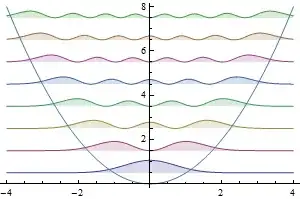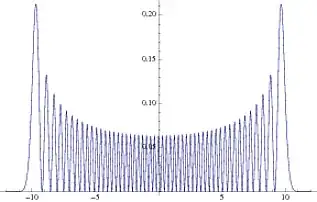Consider probability densities for a particle in the lowest energy state of a simple harmonic oscillator. The quantum mechanical probability density peaks near the equilibrium point and extends beyond the sharp limits of motion predicted by classical physics. The classical probability density is inversely proportional to the classical velocity and is greatest at the endpoints of the motion, where the velocity vanishes. My question clearly is
Is there a inconsistency between Quantum and Classic in probability density of harmonic oscillator in it's ground state? Is the correspondence principle valid here?


 As you can see, this is much closer to the classical probability density. Naturally, this trend increases as we move to even higher n values.
As you can see, this is much closer to the classical probability density. Naturally, this trend increases as we move to even higher n values.